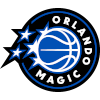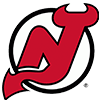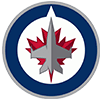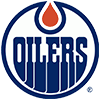Last week I profiled the top 12 hitting prospects in this year's draft, and this week I will be doing the same thing on the pitching side.
Pitching prospects, as everyone should know by now, are risky and then some. Rangers righty Dillon Tate, who went fourth in last year's draft and would probably go first in this year's draft, has just 38.1 professional innings under his belt and has not yet made it to High-A. Carson Fulmer, who went eighth last year to the White Sox, has almost as many walks as strikeouts and an ERA north of 5.00 at Double-A this year. James Kaprielian, who the Yankees took with the 16th pick last year, was dominating through three starts at High-A this year before ending up on the disabled list with elbow inflammation. Some of the pitchers from last year's draft are off to great starts to their pro careers (Tyler Jay, Phil Bickford, Mike Soroka, Beau Burrows, Jon Harris), but trying to predict which ones were going to succeed initially would have been a fool's errand.
Tate, who is still the top pitching prospect from last year's class for fantasy purposes, and Jay are clear building blocks in dynasty leagues at this point, but they are also about three years away from the majors. That's what owners are getting into here. There are no "safe" picks, even if some pitchers appear to be safer propositions than others. It might
Last week I profiled the top 12 hitting prospects in this year's draft, and this week I will be doing the same thing on the pitching side.
Pitching prospects, as everyone should know by now, are risky and then some. Rangers righty Dillon Tate, who went fourth in last year's draft and would probably go first in this year's draft, has just 38.1 professional innings under his belt and has not yet made it to High-A. Carson Fulmer, who went eighth last year to the White Sox, has almost as many walks as strikeouts and an ERA north of 5.00 at Double-A this year. James Kaprielian, who the Yankees took with the 16th pick last year, was dominating through three starts at High-A this year before ending up on the disabled list with elbow inflammation. Some of the pitchers from last year's draft are off to great starts to their pro careers (Tyler Jay, Phil Bickford, Mike Soroka, Beau Burrows, Jon Harris), but trying to predict which ones were going to succeed initially would have been a fool's errand.
Tate, who is still the top pitching prospect from last year's class for fantasy purposes, and Jay are clear building blocks in dynasty leagues at this point, but they are also about three years away from the majors. That's what owners are getting into here. There are no "safe" picks, even if some pitchers appear to be safer propositions than others. It might make sense to say something about a pitcher's ceiling or floor on draft day, but the first sentence in Aaron Nola's writeup on Rotowire when he was drafted two years ago stated that he didn't have the ceiling of other pitchers in the draft (and we were not alone in making that statement) yet he's been a borderline top-10 starter in fantasy this year. Nobody really knows much about how a young pitcher will look a year from now, let alone two or three years down the road. Despite all that, let's rank some pitching prospects from this year's draft!
Jason Groome, LHP, 17, High School (N.J.)
Expected Draft Pick Range: 3-15
The general sentiment seems to be that no player in the draft can match Groome's upside. As a 17-year-old who sits in the mid-90s, the risk is also off the charts. Considering all of these pitchers, college and prep, have a ton of risk, it makes sense to just take the guy with the crazy upside and hope for the best. A six-foot-six lefty with a 96 mph heater and plus curveball is a prime starter kit for a future top-of-the-rotation arm, so some team will understandably pop Groome in the first few picks. Aces are the most prized commodity in the game, so that line of thinking makes sense. There are just so few prep starters who reach their potential, and so many that flame out, that for fantasy purposes it makes sense to stay away, assuming one of the top hitters is available instead. There are five hitters from this class I would prefer in a dynasty league (Corey Ray, Kyle Lewis, Nick Senzel, Will Craig, Blake Rutherford), but if Groome is healthy and pitching in a full-season league a year from now, there's a good chance he'll be the top-rated player from this draft on the prospect rankings at that time.
A.J. Puk, LHP, 21, Florida
Expected Draft Pick Range: 1-2
The hulking six-foot-seven, 230 lbs southpaw is the consensus top college hurler in this class, thanks to a double-plus heater and enough projection to envision his secondary offerings also reaching plus status. His fastball sits in the upper 90s and his second-best pitch is a hard 88-90 mph slider, while his changeup is still a bit of a work in progress. His size and strength allows him to maintain velocity deep into outings, and he has the physical build to handle the 200-plus inning workloads that big league aces are asked to endure. His command and control lag behind the rest of the profile, as his BB/9 was pushing 4.5 late in the season. Tall pitchers often take longer to get their command up to par, but they don't always figure it out. He's not like the typical college hurlers who go in the first two picks of a draft. College typically equals safety, but Puk's floor is not high enough to make up for the fact that he can't match Groome's upside.
Forrest Whitley, RHP, 18, High School (Texas)
Expected Draft Pick Range: 7-30
There is a lot to like with the six-foot-seven Texan, who has dominated prep hitters thanks to a nasty three-pitch mix. His low-to-mid 90s fastball cuts away from righties, and is a legit bat misser. He also features a wicked breaking ball that is labeled as a curveball, but at times takes the shape of a slider. However the pitch gets classified, it is a hammer against lower-level hitters, and projects to be plus. His changeup could also be a third plus pitch in time. There is some effort in the delivery, but his thick 250 lbs frame is built to handle a starter's workload. As with most pitchers his height, especially hailing from the prep ranks, it may take a while for Whitley to put it all together against upper-level hitters, but there is top-of-the-rotation upside here.
Riley Pint, RHP, 18, High School (Kan.)
Expected Draft Pick Range: 3-12
Pint is famous for not being overworked the way many high school starters are on the showcase circuit, which while great for his long-term health also means he's probably further away from logging 150-160 innings in a season than most of his prep brethren. He sits in the mid-90s with his fastball, and has touched triple digits this spring. His curveball is already plus and his changeup has a good chance to get there as well. He lacks the command/control of many of the other pitchers expected to go in the first 15 picks, and given his size (six-foot-four, 210 lbs) and the effort in his delivery, it could take him a while to be able to consistently locate his pitches even at the lower levels of the minors. The risk is similar to that of Groome, with slightly less upside.
Dakota Hudson, RHP, 21, Mississippi State
Expected Draft Pick Range: 4-12
A six-foot-five power righty out of Mississippi State, Hudson propelled himself into the first round after an excellent summer in the Cape and a strong spring showing with the Bulldogs, posting a 101:29 K:BB over 98.1 innings. He sits in the mid 90s with his fastball, a pitch that has late run and sinking action. Unlike most of the pitchers in the first round though, Hudson's best pitch is not his plus fastball but rather his slider/cutter. That pitch eats up lefties and runs away from righties, generating a bevvy of whiffs in the process. He also has a curveball and changeup that should be at least average pitches, which paired with average or better command, gives him an excellent mid-rotation floor and the potential to someday pitch atop a big league rotation if he maxes out.
Braxton Garrett, LHP, 18, High School (Ala.)
Expected Draft Pick Range: 6-15
While projectability may be the first thing that stands out about the six-foot-three prep lefty, he also has a solid floor for a high school hurler. Garrett spins one of the best curveballs in this class, a true plus pitch that puts most college pitchers' best breaking pitches to shame. His fastball, on the other hand, can lag back in the upper 80s. He is able to generate good plane and some late sink on his heater, but a team that takes Garrett in the first 10 or 15 picks will be betting on him adding velocity as he matures. That seems like a solid bet given his athleticism, and even if he only maxes out at 91-92 mph at maturity, a lefty with a hammer curveball, plus command and an above average changeup can easily hack it as a No. 3 starter.
Matt Manning, RHP, 18, High School (Calif.)
Expected Draft Pick Range: 8-15
Manning has really emerged in the past couple weeks, going from a guy who should go in the first round to a guy who should go in the first 15 picks. His athletic lineage (son of a former NBA player), size (six-foot-six, 185 lbs) and upper-90s fastball have led teams to look past the fact that he doesn't have an above average secondary pitch yet. Given his athleticism and projectability, however, it would be unwise to rule out the development of at least one plus offering, whether it be his curveball or changeup, to go with the dynamic fastball. It would require a lot of patience to invest in Manning in a dynasty league, as he'll likely just be getting into a full-season league around this time next year, but the payoff could be huge.
Justin Dunn, RHP, 20, Boston College
Expected Draft Pick Range: 11-20
No college pitcher climbed up draft boards in the weeks leading up to the draft the way Dunn did after he transitioned from the bullpen to the rotation in April. He took to his new role with ease, going on a 47-inning run where he allowed nine runs and struck out 49. He can touch 99 with his fastball, but typically sits in the low 90s. A slider, curveball and changeup round out a four-pitch mix, which gives further credence to the idea of him making it as a starter. A slight six-foot-two, 170 lbs frame will work against him, as will shaky command of his secondary offerings, but his athleticism and success in limited work as a starter provides dynasty league owners with a lot to dream on.
Ian Anderson, RHP, 18, High School (N.Y.)
Expected Draft Pick Range: 3-23
Prep pitchers from the Northeast don't litter draft boards, but Anderson has the current skills and projectability to garner a first-round selection. At six-foot-three, 170 lbs, there is a lot to dream on physically and he already boasts a plus fastball and a breaking ball that generates whiffs. He needs to refine his slider a little, and his changeup may never be plus, but he has solid command so there is a lot for a big league team to work with. An oblique injury limited teams' exposure to him this spring and he will need to be pried away from a Vanderbilt commitment, but if he signs, there's mid-rotation potential down the road.
Joey Wentz, LHP, 18, High School (Kan.)
Expected Draft Pick Range: 20-40
Projectable high school lefties with plus fastballs will always fly off the board fairly early, and Wentz certainly fits the bill. The six-foot-five, 210 lbs. Kansan has an athletic build and could have been an early-round selection as a hitter, but after bouncing back from dead arm last summer, Wentz re-established his first-round upside on the mound. His fastball sits in the low 90s presently, but his projectable frame gives hope to it ticking up down the road. Either way, he has the secondaries -- a curveball and changeup that could both reach plus status -- to thrive with his present 60-grade heater from the left side. It will likely be several years before he reaches the majors, but this is an arm with legitimate front line upside.
HONORABLE MENTIONS
Cody Sedlock, RHP, 20, Illinois
Expected Draft Pick Range: 15-25
Kevin Gowdy, RHP, 18, High School (Calif.)
Expected Draft Pick Range: 18-40
Jared Horn, RHP, 17, High School (Calif.)
Expected Draft Pick Range:25-50
Cal Quantrill, RHP, 20, Stanford
Expected Draft Pick Range: 8-25





































